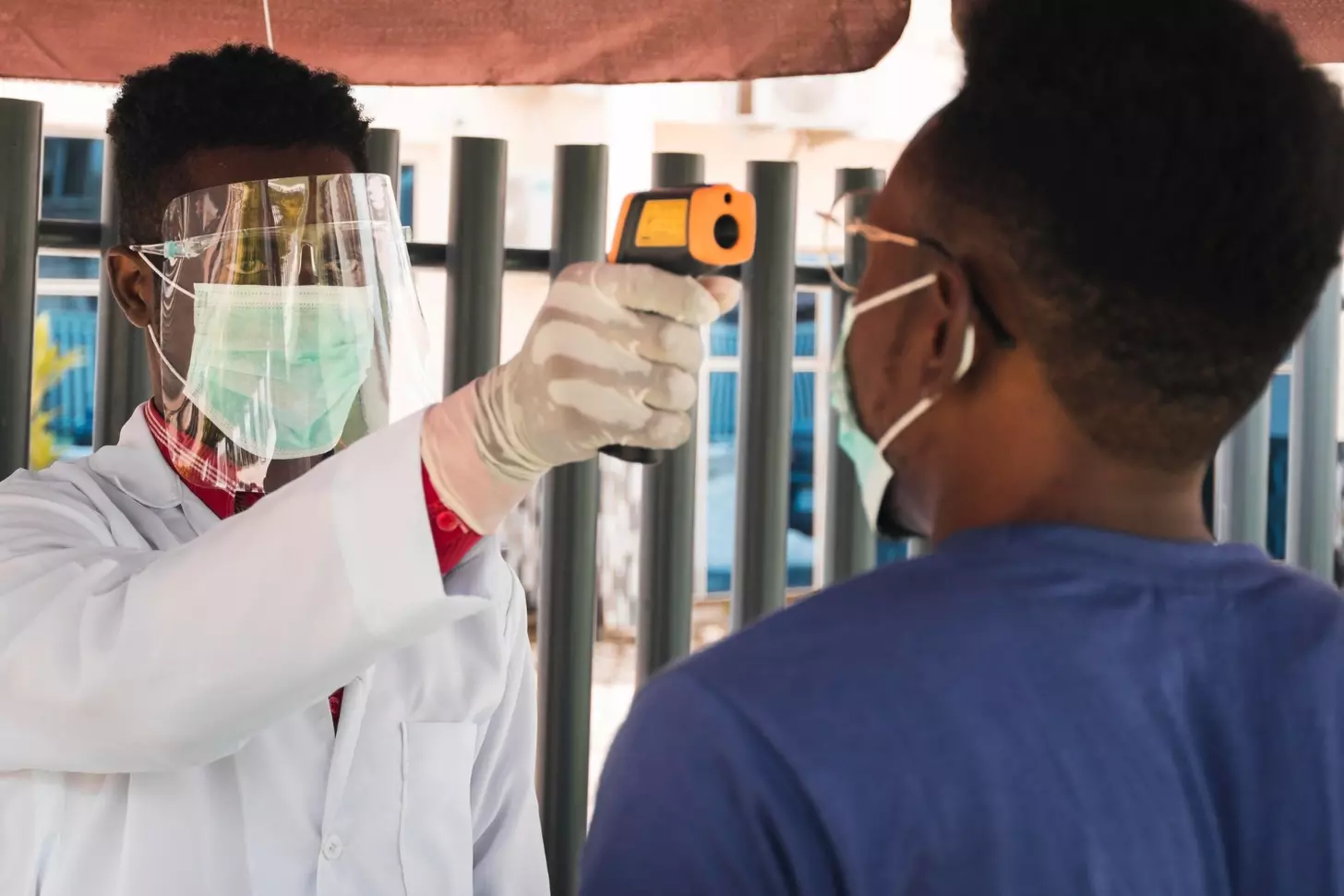Last Updated on November 3, 2025 by mcelik

Non-small cell lung cancer (NSCLC) is the most common lung cancer type. It makes up most cases worldwide. Advances in molecular diagnostics and targeted therapy have greatly improved NSCLC treatment. At Liv Hospital, we offer top-notch healthcare and support for international patients.
Finding the right lung cancer treatment can feel overwhelming. That’s why we focus on personalized care and new therapies. Our goal is to improve patient outcomes. For more on lung cancer and treatment options, check out our page on lung cancer treatment.

NSCLC treatment has changed a lot. Now, we focus more on treatments that fit each patient’s cancer. This means understanding NSCLC’s different parts is key.
NSCLC is split into two main types: squamous and non-squamous. Squamous cell carcinoma shows keratinization or intercellular bridges. Non-squamous NSCLC includes adenocarcinoma, large cell carcinoma, and others.
Choosing the right treatment depends on the type of NSCLC. For example, non-squamous NSCLC, like adenocarcinoma, often has mutations that specific therapies can target.
Molecular testing is vital in NSCLC management. It looks for genetic mutations that certain therapies can target. This has changed how we treat NSCLC, making treatments more precise and effective.
For instance, EGFR mutations are common in adenocarcinoma. Patients with these mutations can get better with EGFR inhibitors. ALK and ROS1 rearrangements also have targeted therapies. New treatments, like Daraxonrasib, show the importance of molecular testing in finding the right treatment.
Staging is key in deciding how to treat NSCLC. It looks at the tumor size, lymph node involvement, and if there are metastases. This helps decide between surgery, radiation, or systemic therapies like chemotherapy or targeted therapy.
Getting the staging right is essential for a good treatment plan. It helps find the best mix of treatments for each patient.

Surgical resection is key in treating NSCLC. It gives early-stage patients a chance for a cure. This method removes the tumor and affected lung tissue, aiming for a cure in non-small cell lung cancer.
There are two main surgeries for NSCLC: lobectomy and pneumonectomy. Lobectomy removes the tumor’s lobe, while pneumonectomy removes a whole lung. Lobectomy is usually preferred because it keeps more lung function.
Recent studies show better outcomes for NSCLC patients thanks to new surgical methods and care. “Surgical resection is the main treatment for early-stage NSCLC,” say top oncologists.
Video-Assisted Thoracic Surgery (VATS) and robotic surgery are changing NSCLC treatment. They cause less pain, shorter hospital stays, and quicker recovery than open surgery.
VATS uses small incisions for a camera and tools to remove tumors. Robotic surgery adds more precision and control, making complex surgeries easier.
Choosing the right patient for surgery is important. Doctors look at the tumor’s stage, location, and the patient’s health. They check lung function, heart health, and other health issues.
Recovery times vary by surgery type. Minimally invasive surgeries usually mean faster recovery. “Adding immunotherapy, like immune checkpoint inhibitors, is now common in NSCLC treatment,” showing how treatments are evolving.
Companies like Nuvalent, Inc., are working on new treatments, like NVL-520, a ROS1-selective inhibitor. This expands treatment options for NSCLC patients.
Radiation therapy is key in treating non-small cell lung cancer (NSCLC). It targets cancer precisely. Today, we focus on matching treatments with each patient’s genetic makeup. This includes radiation therapy, which varies based on the cancer’s stage, location, and the patient’s health.
Stereotactic Body Radiation Therapy (SBRT) is a precise radiation therapy for early-stage NSCLC. It’s used for tumors that can’t be removed by surgery. SBRT gives high doses of radiation in a few sessions, making treatment easier for patients.
SBRT is great for tumors hard to reach surgically. It’s precise, which means less harm to healthy tissues. This reduces side effects and improves results. Research, like that by Revolution Medicines, is making treatments better for NSCLC patients.
Conventional Fractionated Radiation uses smaller doses over weeks. It’s for more advanced NSCLC or larger tumors. This method aims to control the tumor while keeping side effects low.
This approach has been a mainstay in treating NSCLC. It balances effectiveness and safety. The treatment plan is customized for each patient, considering the tumor and the patient’s health.
Radiation therapy can be adjuvant or definitive for NSCLC. As adjuvant therapy, it follows surgery to kill remaining cancer cells. As definitive therapy, it’s the main treatment for inoperable tumors or when surgery isn’t an option.
The choice depends on the disease stage, patient’s health, and tumor details. Advances in radiation therapy are improving outcomes for NSCLC patients. This brings hope for better survival and quality of life.
Chemotherapy is a key part of treating non-small cell lung cancer (NSCLC). It comes in different types, each suited for different patients. The choice depends on the cancer’s stage, the patient’s health, and the tumor’s genetics.
Platinum-based chemotherapy is a mainstay for advanced NSCLC. Combination regimens, like cisplatin or carboplatin with paclitaxel or gemcitabine, have shown great results. They help improve survival and quality of life.
| Platinum Agent | Combination Agent | Clinical Use |
|---|---|---|
| Cisplatin | Paclitaxel | First-line treatment for advanced NSCLC |
| Carboplatin | Gemcitabine | Alternative first-line option for metastatic NSCLC |
Chemotherapy is also used before and after surgery. Adjuvant chemotherapy helps kill any cancer cells left after surgery, lowering the chance of cancer coming back. Neoadjuvant chemotherapy makes tumors smaller, making surgery easier.
“The use of chemotherapy in the adjuvant setting has been shown to improve survival in patients with resected NSCLC.”
Chemotherapy can have tough side effects. Supportive care, like antiemetics and growth factors, helps manage these. We focus on keeping patients’ quality of life high.
Combination regimens have shown to improve survival in metastatic NSCLC. New treatments, like bispecific antibodies, are being tested. They offer hope for better NSCLC treatments.
Targeted therapies have changed how we treat Non-Small Cell Lung Cancer (NSCLC). They offer treatments that match the genetic makeup of each tumor. This approach has greatly improved treatment results by focusing on the unique traits of each cancer.
NSCLC treatment is now different thanks to targeted therapies. Unlike old treatments, these therapies target specific genetic changes in cancer cells. This reduces harm to healthy cells and lowers side effects.
EGFR inhibitors are a key part of NSCLC treatment for those with EGFR mutations. Osimertinib, Erlotinib, and Gefitinib are approved for various stages of NSCLC treatment.
ALK and ROS1 rearrangements can also be targeted in NSCLC. Alectinib, Crizotinib, and Lorlatinib are ALK inhibitors that help treat NSCLC with ALK-positive tumors.
Alectinib is very effective against brain metastases because it can cross the blood-brain barrier.
| Inhibitor | Target | Notable Features |
|---|---|---|
| Alectinib | ALK | Effective against brain metastases |
| Crizotinib | ALK, ROS1 | First-generation ALK inhibitor |
| Lorlatinib | ALK | Effective against ALK resistance mutations |
KRAS G12C mutations are common in NSCLC. New targeted therapies like Sotorasib and Adagrasib are showing promise in clinical trials.
“The emergence of KRAS G12C inhibitors represents a significant breakthrough for NSCLC patients harboring this mutation, providing a new treatment option.”
Companies like Nuvalent, Inc. are working on new targeted therapies. NVL-520 and NVL-655 are being studied for treating NSCLC with specific genetic changes.
Immunotherapy has changed how we treat non-small cell lung cancer (NSCLC). It uses the body’s immune system to fight cancer. This method is now a key treatment for both early and advanced NSCLC, giving hope to patients and doctors.
PD-1/PD-L1 inhibitors are key in fighting NSCLC. They block the PD-1 protein on T cells and PD-L1 on tumor cells. This lets the immune system attack cancer cells better.
Pembrolizumab, Nivolumab, and Atezolizumab are top PD-1/PD-L1 inhibitors for NSCLC. Studies show they improve survival and slow cancer growth in advanced NSCLC patients.
| Drug | Mechanism of Action | Key Clinical Trials |
|---|---|---|
| Pembrolizumab | PD-1 inhibitor | KEYNOTE-024, KEYNOTE-042 |
| Nivolumab | PD-1 inhibitor | CheckMate 017, CheckMate 057 |
| Atezolizumab | PD-L1 inhibitor | OAK, POPLAR |
Biomarker testing is key in choosing the right patients for immunotherapy. PD-L1 on tumor cells is the main biomarker for PD-1/PD-L1 inhibitors.
We use tests like 22C3 and SP263 to check PD-L1 levels. Patients with high PD-L1 levels often respond well to treatment. But, some with low PD-L1 can also benefit.
How long to use immunotherapy for NSCLC is being studied. Some patients may stop treatment after a while, while others need ongoing therapy.
We check treatment success with CT scans and watch for signs of cancer growth or pseudoprogression. Pseudoprogression is when tumors seem to grow before actually shrinking with treatment.
Research keeps showing ways to improve immunotherapy for NSCLC. New trials are looking at bispecific antibodies and tumor-infiltrating lymphocyte therapies. These might lead to even better results.
Combination therapies are key in treating NSCLC. They mix different treatments to boost therapy results and help patients more.
Chemoimmunotherapy is showing great promise in NSCLC treatment. Studies show it can improve survival and stop cancer growth. For example, pembrolizumab with chemotherapy is now a first-line treatment for many patients.
These combinations work well together. Chemotherapy helps immunotherapy by:
Dual checkpoint inhibition is another exciting strategy. It targets two immune checkpoints at once to fight cancer better. Early results suggest it can lead to better and longer-lasting responses.
For example, pairing PD-1 inhibitors with CTLA-4 inhibitors is promising. But, it can also increase side effects, so careful patient selection is needed.
Combining targeted therapy with immunotherapy is a smart move for patients with certain genetic changes. Trials combining EGFR or ALK inhibitors with immunotherapy are showing promise. For instance, osimertinib with immunotherapy is being tested in EGFR-mutant NSCLC patients.
“The future of NSCLC treatment lies in optimizing combination regimens that can provide the best possible outcomes for patients while minimizing toxicity.”
Dr. [Last Name], Oncologist
In summary, combination therapies are changing NSCLC treatment. As research grows, we’ll see even better treatments that improve patient lives.
The treatment for metastatic NSCLC is evolving with new options. Research is leading to innovative treatments for resistant disease. These new therapies aim to tackle the challenges of metastatic NSCLC, providing more tailored and effective treatments.
Bispecific antibodies are a new hope for metastatic NSCLC. They are made to target two different things at once, which could make them more effective. For example, they can bring cancer cells and immune cells together for a stronger immune response.
Several bispecific antibodies are being tested for NSCLC. Companies like Revolution Medicines are working on treatments like daraxonrasib. These new therapies are being tested in clinical trials, giving patients with resistant disease new options.
TIL therapy is another innovative treatment for metastatic NSCLC. It involves taking lymphocytes from a tumor, growing them outside the body, and then putting them back in. The goal is to boost the immune system’s fight against cancer.
Early trials show TIL therapy can reduce tumors significantly. This method uses the patient’s own immune system, making it a personalized treatment option.
ADCs are being studied for late-stage NSCLC. They combine the precision of antibodies with the power of drugs, targeting cancer cells while protecting healthy tissues.
Clinical trials are key in developing new treatments. They give patients access to cutting-edge treatments and help researchers test their safety and effectiveness. For those with metastatic or resistant NSCLC, trials can be a valuable treatment option.
As we learn more about NSCLC and develop new treatments, it’s important for patients to talk to their doctors. This includes discussing the benefits and risks of clinical trials.
At Liv Hospital, we know how complex non-small cell lung cancer (NSCLC) is. We’ve talked about many treatment options. These include surgery, radiation, chemotherapy, and more.
Handling your NSCLC treatment needs a full plan. This plan should include the newest medical research and technology. New trials and treatments give hope to those with NSCLC. We aim to provide top-notch care following international standards.
When choosing your treatment, it’s key to talk to your healthcare team. They can help pick the best plan for you. We suggest looking into the treatments we’ve discussed and keeping up with new NSCLC treatments.
By teaming up with your healthcare team and staying current with research, you can make smart choices. This way, you can move through your NSCLC treatment journey with confidence.
NSCLC is a common lung cancer type. It’s divided into squamous and non-squamous NSCLC. This cancer is aggressive and can spread.
Staging NSCLC means finding out how far the disease has spread. It looks at tumor size, lymph nodes, and if it has spread. Staging helps decide the best treatment, like surgery or chemotherapy.
Molecular testing finds specific genetic changes in tumors. This helps doctors choose the right treatments. It’s about finding the best fit for each patient’s cancer.
Surgery is a main treatment for NSCLC. It includes removing the tumor or part of the lung. Techniques like VATS and robotic surgery are used, based on the tumor’s location and size.
Radiation therapy kills cancer cells with high-energy rays. It can be the main treatment or used after surgery. It also helps manage symptoms in advanced cases.
Chemotherapy for NSCLC often uses platinum-based drugs. These are used before or after surgery, or in advanced cases. The goal is to control symptoms and improve life quality.
Targeted therapies target specific genetic changes in tumors. Examples include EGFR and ALK inhibitors. They’re used for NSCLC with certain genetic profiles.
Immunotherapy boosts the immune system to fight cancer. It blocks immune checkpoints or enhances anti-tumor responses. It’s used for NSCLC, mainly in patients with high PD-L1 expression.
Combination therapies mix different treatments, like chemotherapy and immunotherapy. This approach aims to improve treatment results. Examples include chemoimmunotherapy and dual checkpoint inhibition.
For advanced and resistant NSCLC, new treatments are available. These include bispecific antibodies and tumor-infiltrating lymphocyte therapy. They offer hope for patients with few options.
Patients can navigate their treatment by working with their healthcare team. Staying updated on new treatments and seeking support from patient groups is also helpful.
Subscribe to our e-newsletter to stay informed about the latest innovations in the world of health and exclusive offers!
WhatsApp us